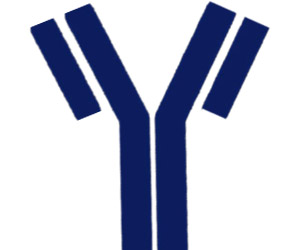


Antibody Source/Host
Secondary antibodies are raised in a host by inserting primary antibodies produced against antigen, peptides, proteins & other molecules. The host for production of secondary antibody needs to be different from the target species. The secondary body host is selected based on application requirement. If a primary antibody was derived in a Rabbit the secondary antibody needs to be anti-rabbit raised in Goat or Donkey or Mouse etc.
Detection Assay
Selection of secondary antibody is based on detection assay selected to perform test. If applications are ELISA, Western Blot, Immunoprecipitation the ideal secondary antibody would be enzyme conjugated. Alternately for applications like immune florescence (IF) or Flow Cytometry (FC) the antibody conjugated with fluorochrome would be best. Secondary antibodies labeled with biotin are useful for detection of proteins that are expressed at a low level.
Whole or Fragmented Antibody
To meet the need of detection assays, secondary antibodies can be either whole or fragmented. Whole secondary antibodies are more commonly used, and contain both H & L chains. They are widely regarded for the strong divalent binding to variable regions and are equipped with sufficient regions for the attachment of enzymes and dyes; however they can result in high background, an increased amount of cross-reactivity and a lower specificity.
Fragmented secondary antibodies are divided into two types of fragments
F(ab) and F(ab’)2, both of which are small and eliminate non-specific binding to FC receptors, which is ideal in Flow Cytometry, Immuno histochemistry, and Immuno fluorescence applications. F(ab) fragments are small monovalent antibody fragments (MW=~50kDa) produced after whole antibody digestion by papain. The fragment contains a single binding domain and a small constant region, useful in blocking background caused by primary antibodies, as well as endogenous IgG on cells and tissues in all labeling experiments.
Purification
The purification process involves extraction of antibodies from antiserum which contains a mixture of compounds. On purification the antibodies can be used in a variety of ways.
Immoilized metal affinity chromatorgraphy (IMAC)
Immobilised Metal Affinity Chromatography (IMAC) is popular for effective purification of a broad range of antibodies, proteins & peptides. This technique most successful in purification of IgG1 monoclonal Antibodies.
Ion – Exchange Chromatography (IEC)
Ion – Exchange Chromatography (IEC) is most used method for antibody purification. Anion exchange is applied in mAb purification in a product flow-through mode to remove DNA and some viruses, negatively charged at neutral pHs.
Hydrophobic interaction chromatography (HIC)
Hydrophobic interaction chromatography (HIC) contributes to the polishing step, popular purification process in monoclonal antibody purification. It is an important step for aggregate clearance and reduction of host cell proteins. HIC offers a preferential selectivity to ion exchange chromatography
Size-Exclusion Chromatography (SEC)
Gel filtration chromatography (GFC) is a powerful analytical tool in the separation of antibodies. Size-exclusion chromatography (SEC) is a chromatographic method in which molecules in solution are separated by their size, and in some cases molecular weight.
Protein A or G Purification
Protein A or G purification system are suitable for isolating total mammalian IgG from serum, ascites fluid, or cell culture medium. Use of protein A or protein G depends on the species of sample animal and isotype of antibody.
For purification of peptide antigens protein A purification or protein G purification is not recommended as antibodies against the large carrier protein will also be isolated. This purification method is useful in purifying antiserum with antigens larger than 10 kDa, for purifying monoclonal antibodies from supernatants and ascites.
Immuno-Affinity
To isolate or purify antigen-specific antibodies, immuno-affinity method is very successful. The method requires column constructed by coupling an antigen to a gel matrix. The method is best suitable for isolating peptide-specific polyclonal antibodies from serum. The method can be implied to protein antigens and monoclonal antibodies purification.
Multiplexing with secondary antibody
In multiplexing secondary antibodies are conjugated with multiple fluorescent dyes, allowing to simultaneous identification of different target regions. Highly cross-adsorbed secondary antibodies work optimally because it decreases species cross-reactivity and background.
Class/subclass of antibodies
Antibodies are of five classes (isotypes) known as IgG, IgM, IgA, IgD, and IgE. The IgG have sub classes IgG1, IgG2a, and IgG2b. A secondary antibody is used to detect primary antibody. When choosing a secondary antibody, it would need to target a specific class or subclass of primary antibody. A primary antibody immunoglobulin G (IgG) needs Anti-IgG secondary antibody for its detection. If the class/subclass of the primary antibody is unknown, use an anti-IgG F(ab).

Feel free to ask Query